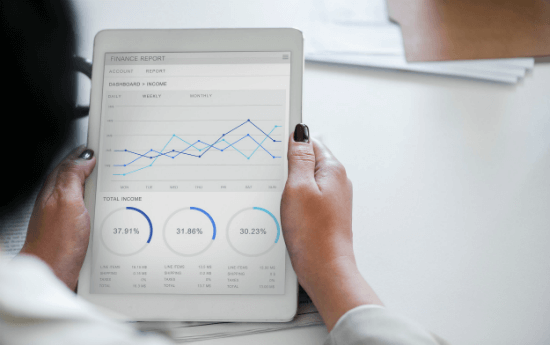KPIs For Call Centers [2023]
There are many ways to track the success of your call center, and key performance indicators are one of the best ways to do so. Also known as KPIs, these metrics allow you to see how effectively your department is doing in reaching business goals.
For example…
Let’s say you want to shorten the length of your calls, improve customer satisfaction, or increase sales. KPIs can help you effectively improve all of these areas by giving you a measuring stick to do so. A KPI puts a tangible number on how well your call center is doing; for example, a KPI you track might measure the average wait time for a caller or the percentage of abandoned calls.
1. Average Abandonment Rate
2. Customer Satisfaction Score
3. Average Wait Time
4. First Call Resolution
5. Occupancy Rate
6. Percentage of Calls Blocked
7. Service Level
8. Average Handle Time
9. Call Quality
10. Employee Satisfaction
11. Average After-Call Work Time
12. Agent Absenteeism
13. Active Waiting Calls
14. Cost Per Call
15. Call Arrival Rate
16. Time Lost Due to Technology Problems
17. Callback Messaging
18. Repeat Calls
19. Sales Per Agent
20. Call Resolution
21. Quality of Recent Support
22. Customer Retention
23. Lead Conversion Rate
24. Call Drop Rate
25. Customer Effort Score
Knowing Where to Start
There are all kinds of KPIs that call centers can use to measure your performance, so it can be hard to know where to start.
You certainly don’t need to incorporate every KPI under the sun to improve the way you do business—in fact, measuring too many KPIs may be counter-productive.
We’ve gathered a list of 25 call center KPIs to help you get a grasp on how to start measuring your business’ success today. Read on to learn 25 KPIs to take your call center to the next level.
1. Average Abandonment Rate
By tracking the percentage of callers who hang up before reaching a customer service representative, you’ll have a better idea of what is driving customers to lose patience and move on before getting the help they need. Call abandonment can have a major effect on your bottom line, so it’s important to measure and seek to reduce this percentage.
2. Customer Satisfaction Score
Though this may feel like a subjective number, customer satisfaction can be quantified in a variety of ways. Many call centers conduct customer satisfaction surveys to keep a pulse on how their customers feel about their company. This can be combined with quality assurance measurements and measured over time to see which changes are helping and which are hurting your business.
3. Average Wait Time
Wait times can increase abandonment rates and send your customers looking for a competitor who can give them better customer service. Track wait times by dividing the total wait time by the number of calls answered. This will tell you whether or not you need to hire more customer service representatives, or—better yet—find ways to increase efficiency with the representatives you already have. Call center professionals can be priceless in improving this metric.
4. First Call Resolution
First call resolution is tracked by the percentage of calls that are resolved without an agent needing to transfer them to another department or call them back. When a call is resolved with the first customer service representative, customers are happier and will be more likely to rely on your business in the future.
5. Occupancy Rate
Occupancy rates will help you measure how your representatives are handling their time on and off the phone. This call center KPI tracks the time spent talking on a live call, combined with the time spent resolving the issue after hanging up the phone.
6. Percentage of Calls Blocked
Wait times can drive away customers, but blocked calls will really turn them off even more. A blocked call occurs when a customer dials into your call center and gets a busy tone because too many people are in the queue. Strive to free up your lines and talk to as many customers as possible to improve overall customer satisfaction.
7. Service Level
In today’s world, time is of the essence. Customers don’t like waiting, and your service level can help you know how effective you are at shortening their wait times. Measure the percentage of calls answered within a specific time in seconds (e.g. percentage of calls answered within 5 seconds, the percentage of calls answered within 10 seconds, etc.).
8. Average Handle Time
Also known as AHT, this is one of the most crucial call center KPIs. AHT helps you know how long your representatives are spending on one phone call, from start to finish. An agent with a high AHT could be struggling to help customers, but a customer with an extremely low AHT may not be addressing a customer’s issues. Monitor calls to really understand the issues on both ends of the spectrum.
9. Call Quality
Call quality must be measured with the help of a supervisor or quality assurance team. Record calls and review them to see which agents are helping customers most effectively and which agents are struggling. This will help you raise the performance level of your entire department by learning from those who get the job done well.

10. Employee Satisfaction
Customers are the most important focus of your call center, but employees are also an important part of your everyday business.
After all, without happy employees, you won’t be able to help customers. Measure employee satisfaction with surveys and employee reviews. Take their feedback into consideration and implement changes where you can.
11. Average After-Call Work Time
Most representatives cannot move from one call to the next without taking a few minutes to wrap up the issues relating to the previous call. They may need to send emails or update databases before moving onto the next caller. Measure after-call work time to maximize efficiency in your call center.
12. Agent Absenteeism
Staffing your call center can be difficult, and agent absenteeism can have a major impact on your bottom line. Measure the number of days lost per year due to agents being absent to get a better idea of how well you’re optimizing your team.
13. Active Waiting Calls
Learn how many callers you have waiting on the line when you measure active waiting calls. This can tell you how to best manage your representatives. For example, if you continuously have a high number of callers at a certain time of day, you can decide to bring in an extra representative during that time to manage the call load.
14. Cost Per Call
Most call centers strive to increase sales to bring in greater profits, but another way to achieve the same goal is by reducing expenses within your department. Since you’re paying an agent to be there, each call costs a certain amount of money. Measure cost per call to see who is most efficient, and consider offering rewards for top performers.
15. Call Arrival Rate
Data can tell a very important story if you read into the numbers far enough. Track call arrival rate to identify trends and pinpoint patterns. This metric can be measured by tracking the number of calls per day over the past 30 days.
16. Time Lost Due to Technology Problems
Technology is changing at a pace faster than most of us can keep up with. It enables companies to do more than ever before, but it can also be the cause of setbacks when things go awry. Track time lost due to technical problems to learn where your team needs technology training, or when you need to replace certain technology systems altogether.
17. Callback Messaging
Every call center should track the total number of messages left with a callback number. These customers have taken extra time out of their day to reach out to your company, and they deserve attention just like the customers who are actively on the line. Make sure these callbacks are occurring in a timely manner to increase customer satisfaction.
18. Repeat Calls
Agents at most call centers are already tracking the reason behind any given call. Track repeat calls as a KPI in your call center to see if there are recurring issues happening frequently. If a certain issue spikes in frequency, it’s definitely time to see how you can eliminate the problem before it happens to more customers.
19. Sales Per Agent
If your call center is making sales, it’s vital to track how many sales are happening per agent. This will give you a good indication of which employees to reward, and which employees may need more training to reach their full potential in sales performance.
20. Call Resolution
First call resolution is ideal, but not all customer service calls will be resolved with the help of the first agent. Use call resolution as a KPI in your call center to track how much farther most callers have to go before their issue is resolved. If a high percentage of calls need to be escalated or passed on, you probably want to rethink your strategy.
21. Quality of Recent Support
Though overall customer satisfaction is important, this call center KPI is even more specific and telling of how to improve your call center performance. Measure quality of recent support by surveying customers immediately after their call and asking, “How would you rate the quality of the support you received on your call today?”
22. Customer Retention
Customer loyalty is something all companies strive to build. Because it’s far more expensive to gain a new customer than to keep one around, it’s important to measure customer retention to see where your company falls on the scale of customer loyalty.
23. Lead Conversion Rate
Lead conversion rate is a KPI used by call centers (inbound) and sales teams. This metric can be tracked by measuring the percentage of leads that become customers. The most successful call centers will have effective and skilled agents who help contribute to a high lead conversion rate.
24. Call Drop Rate
Some customers may hang up before they get a chance to speak to an agent, while others may even hang up mid-conversation. But call drop rate measures the percentage of calls that are cut-off due to technical reasons like loss of cell phone service.
25. Customer Effort Score
It’s your job to make it easy for customers to address their concerns. A customer effort score measures customer satisfaction by asking the question, “How easy was it to address the reason for your call?” Customers should then be given the option to rank the easy of their customer experience.
Incorporate These Call Center KPIs with ROI Today
By incorporating these call center key performance indicators, you’ll have a much better grasp of how you can improve your call center bottom line and build loyal customers. And if you’re looking for more help with optimizing your call center, contact ROI Call Center Solutions. We provide high-quality solutions to help your business thrive like never before. Get in touch today.






